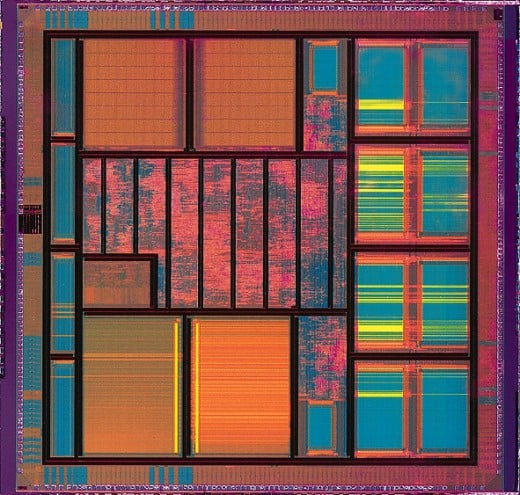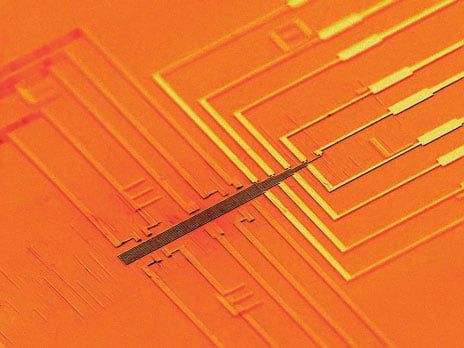- HubPages»
- Technology»
- Computers & Software»
- Computer Hardware
Nanowire - How The Integrated Circuit Will Change
Who is Gorden R. Moore
I'll start this article with a word or two about Gorden R. Moore, Vice President of Intel, who predicted that roughly every two years the number of transistors packed into the same space doubles. This trend has turned out to be true for over fifty years and is projected to last until 2015 when the upper physical limits of integrated circuit design is reached.
"The complexity for minimum component costs has increased at a rate of roughly a factor of two per year... Certainly over the short term this rate can be expected to continue, if not to increase. Over the longer term, the rate of increase is a bit more uncertain, although there is no reason to believe it will not remain nearly constant for at least 10 years. That means by 1975, the number of components per integrated circuit for minimum cost will be 65,000. I believe that such a large circuit can be built on a single wafer." -- Gorden R. Moore
The quote above, roughly translated says that for the same amount of cost the number of transistors imprinted on a silicon wafer has double every two years. There are a number of benefits from this very true observation. As the number of transistors increase in the same space:
- Circuits double in complexity while costing the same to make
- Less energy is used to power these circuits
- Devices can become more complicated, yet cost less
- Device speeds increase while costing the same as the device from two years prior
These truisms do not just apply to processors, but any device that uses transistors. This includes Charge Coupled Devices (CCDs) for digital cameras, memory chips, video cards, network circuits and so on.
But by the year 2015 a theoretical upper limit will be reached with the current defacto-standard techniques for creating these circuits.
That is about to change.

The Silicon Wafer Integrated Circuit
An integrated circuit is a microscopic array of electronic circuits and components that has been diffused or implanted onto the surface of a single crystal of silicon. It is an integrated circuit because the components, all made together on one surface. Integrated Circuits range wildly in complexity from very simple logic modules to complete microcomputers containing hundreds of millions of elements.
Once the integrated circuit was introduced in 1959, manufacturers set out to double the number of integrated components on a single chip every two years. This in line with "Moore's Law."
The very first integrated circuits (in the mid-fifties) held only a dozen components and were called small scale integration (SSI) devices. By the 1960s medium scale integration (MSI) included hundreds of devices on a single chip and by the 1970s large scale integration (LSI) could incorporate thousands of devices on a single chip. The company that heralded LSI production was Intel Corporation with the first computer on a chip, the Intel 4004.
In 1979 Intel introduced the 8088 rapidly followed by the Intel 80286, 80386, and 80486 in the mid to late 80s.
Nano Scales
To date the tightest scale for discrete devices on a single silicon chip is in the twenty-five nanometer range.
If that it reduced by a tenth circuit density will increase dramatically. This in turn will lower the power requirements which will reduce the heat produced and allow the battery run devices to run longer with the same battery types used today.

The NanoWire Circuit
A team of scientists at Harvard University, lead by Charles Lieber have successfully created nanowires in the ten (10nm) nanometer range. Professor Lieber projects that he and his team can get these wires down to the three (3nm) nanometer range.
These nanowires are made up of 10-nanometer wide core of germanium. The core is surrounded by a 2 nanometer thick shell of silicon as "cladding." The silicon "cladding" is doped with aluminum oxide, then zirconium oxide, then another layer of aluminum oxide. This effectively makes the wires semi-conductors.They can also hold a charged state without a "refreshing" power source. In other words, once these wires are charged (or discharge) they can hold that state without external power.
The lower power requirement potential is very promising for lower power requirement circuits.
The nanowires are set parallel to each another (see photo). A series of metal gate electrodes crosses the wires perpendicularly. A gate allows the state of the wire (on or off) to be changed with a very small amount of electricity; much less than the wires themselves manage. Because each junction of gate and wire makes up a transistor device density, the number of devices per ten nanometers, can be quite high.
This design means many more transistors can be crammed into a given volume than current methods allow.
The current limit for CMOS circuitry is sixteen (16) nanometers wide. To put this another way current CMOS manufacturing techniques mean that they take up about eight times the space a nanowire circuit would require.
Though professor Lieber expects his transistors to operate at between 10 and 100 megahertz, considerably slower than the gigaHertz ranges of current circuits, power demands will be much much lower.
Current CMOS circuitry requires ten to one hundred nanoWatts per transistor. Nanowire transistors will likely use 1nanoWatt per transistor.
That would make it ideal for applications where the device is small and requires low power consumption and where fast processing is not needed. For instance, the tiles might make a controller for some microelectromechanical device, so it wouldn’t need to be wired to a larger external processor. The tiles could run some sort of biosensor, to provide constant monitoring of a person’s medical status.
Coda
A lot of this is speculative. The circuits discussed here are still experimental and none of them have transistioned from the labratory setting to production.
Still, this is the way advances are made in electronics; at the college lab level.
Disclaimer
The author was not compensated in any way, monetarily, with discounts, or freebies by any of the companies mentioned.
Though the author does make a small profit for the word count of this article none of that comes directly from the manufacturers mentioned. The author also stands to make a small profit from advertising attached to this article.
The author has no control over either the advertising or the contents of those ads.








